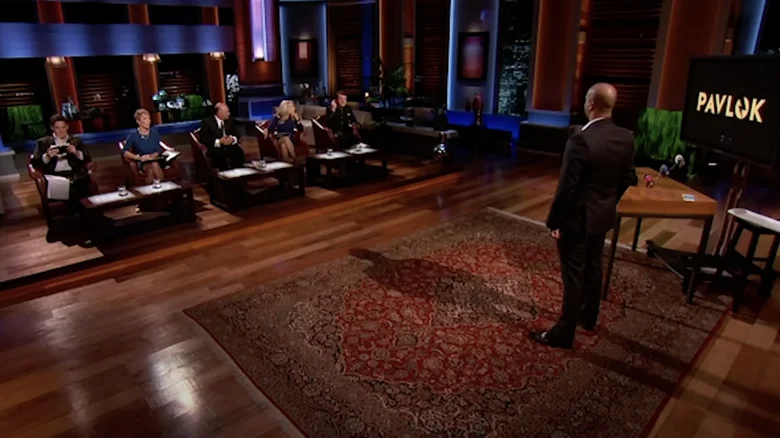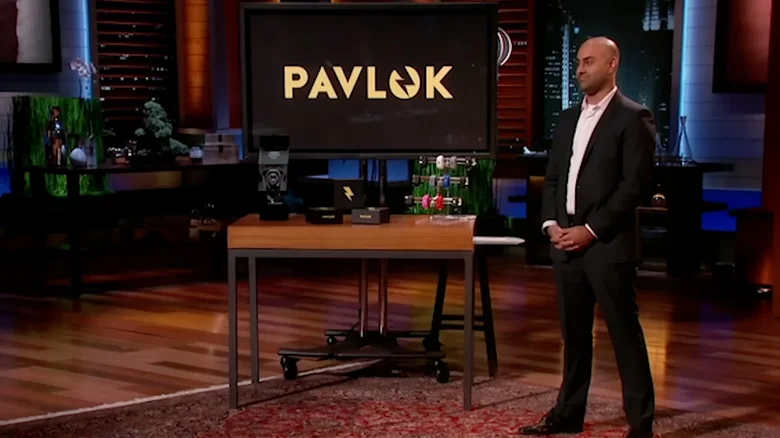Key Highlights
- Maneesh Sethi pitched Pavlok on Shark Tank Season 7, asking for $500,000 for 3.14% equity, valuing the company at $15.9 million.
- The Sharks questioned the lack of scientific backing; Mark Cuban called Sethi a “con artist.”
- Kevin O’Leary offered a $500,000 loan at 7.5% interest for 3.14% equity. Sethi rejected the offer, saying, “I would take an offer from anybody besides Mr. Wonderful.”
- Post-Shark Tank, Pavlok continued to grow and launched updated device versions through successful IndieGoGo campaigns.
Maneesh Sethi is the founder of Pavlok, a buzzer watch designed to help users break bad habits, such as nail biting, unhealthy eating, sleeping, and procrastination. The product uses electric shocks to help users drop unwanted habits.
Sethi appeared on Shark Tank Season 7, Episode 29, which aired in 2015, seeking $500,000 for 3.14% equity. While the Sharks were intrigued by the product, they were skeptical about the valuation, effectiveness, and the lack of scientific research backing the product.
So, did Pavlok get a deal on Shark Tank, and is it still in business? Let’s find out.
What is Pavlok?
Pavlok is a wearable device that produces a mild electric shock every time a user engages in a bad habit that they want to break. You can use the device to stop smoking, nail-biting, and oversleeping by training your brain through negative reinforcements.
The Pavlok concept was inspired by the theory of classical conditioning by Russian scientist Ivan Pavlov, which states that behavior can be encouraged or discouraged using a specific outside stimulus.
Pavlok Net Worth
Pavlok’s revenue reportedly reached $1.3 million in 2024, increasing from $757.2k in 2023 and $371k in 2021. As of 2024, Pavlok has a net worth of $2 million, while Maneesh Sethi’s net worth is estimated to be $25 million in the same year.
Pavlok Shark Tank Pitch
Maneesh Sethi entered the Shark seeking $500,000 for 3.14% equity, placing the company’s valuation at $15.9 million. He presented Pavlok, a wearable device designed to help users break bad habits.
He explained that the device works by delivering a mild electric shock whenever a user performs an unwanted habit. Sethi said that the shock uses aversive conditioning to train the brain to link the habit with the shock, and drop the habit altogether.

Sethi’s pitch wasn’t smooth- the Sharks expressed skepticism about the product’s lack of clinical trials to prove its effectiveness. Cuban labelled him a “con artist” for taking other people’s scientific research and applying it as his own.
Kevin questioned the inflated valuation, asking Sethi to explain the numbers and the sales so far. Sethi mentioned they had made $800,000 in sales of his $200 product, with preorders representing three-fourths of the sales, and the rest prototypes.
Asked by Lori why he couldn’t conduct his own clinical trials, Sethi fired back, saying a majority of Pavlok’s users were able to break bad habits within a week. Cuban jumped in, noting that Sethi could have approached a university to conduct clinical trials before releasing it to the market.
Lori bowed up, citing the lack of mass proof for the device, and Barbara Corcoran followed soon after, labelling the presentation as overly exhausting and complicated.
Robert Herjavec did not make an offer because, even though he was intrigued, he found the $15.9 million valuation inflated. He bowed out, followed by Mark, who suggested that proper clinical trials are needed, instead of relying on other people’s research.
After the rest of the Sharks bowed out, Kevin O’Leary expressed interest, noting that he had worked on an aversion therapy study when he was studying psychology. He offered Sethi the $500,000 he asked for, but as a loan at 7.5% interest plus 3.14% equity.
Kevin affirms that if the projected financials are correct, Sethi could easily pay back the loan. Despite expressing optimism about the offer, Sethi rejected the deal, claiming that he would work with any of the Sharks, except Kevin.
At that point, Kevin lost his cool, shouting, “Maneesh, you are an a**hole, get the f*** out of here!” The flurry of expletives left other Sharks stunned as Sethi walked out.

Let’s find out what happened to Pavlok after the Shark Tank, a decade later.
Pavlok Shark Tank Update
Despite walking out of the Shark Tank without a deal, Pavlok continued to grow, and it benefited from the spotlight.
In a media interview with Insider months later, Sethi expressed no regrets at turning down Kevin’s offer, saying that he did not feel that he was the right partner.
Sethi noted he had sold a total of 10,000 wristbands and raised $343,255 on IndieGoGo for an alarm clock they were working on. Asked by Insider whether he regrets appearing on Shark Tank, Sethi said that if he were to appear on the show again, he would change the presentation.
Post-show, Sethi has launched other successful campaigns on IndieGoGo for his other products. He released Pavlok 2 and 3, and the updated versions of the device, featuring app integrations, gesture tracking, alarms, and advanced habit-tracking features.
Pavlok has integrated with services like IFTTT and Zapier, available for both iOS and Android users.
Sethi has also expanded Pavlok’s product line by introducing the Shock Clock 2, Shock Clock 3, and the recently launched Pavlok Smart Ring. The Shock Clock 3 features an alarm function that doesn’t stop until the user performs a certain action, such as scanning a QR code posted in another room, jumping a rope, or solving a math problem.
The Pavlok Ring is described as a personal AI trainer and life coach that helps users track their sleep habits, step count, heart rate, and blood oxygen levels.
Is Pavlok still in business?
As of 2025, Pavlok is still in business, and Maneeshi Sethi remains the face of the company. The company sells its devices through its website, Pavlok.com, and on Amazon. The company continues to release newer versions of its products and new habit-changing technology for its user base.
Pavlok may not have closed a deal on Shark Tank, but the company (and its founder) has turned the negative publicity into a launchpad for long-term growth. The company’s continued success implies that, sometimes, rejections do not always mean the end.
